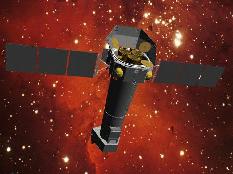 |
XMM |
 |
XMM |
 Contents
ContentsIntroduction
EPIC-MOS
EPIC-pn
XMM/EPIC interface
More Information
 Introduction
IntroductionThe PI institute of the EPIC project is currently the University of Leicester, who also lead the EPIC-MOS project. The EPIC-pn is lead by the Max-Planck-Institut für extraterrestrische Physik (Garching), and the EPIC systems production is lead by CNR IFCTR, Milan.
 EPIC-MOS
EPIC-MOSEach camera consists of an array of 7 Metal Oxide Semiconductor (MOS) front-illuminated CCD chips (manufactured by EEV of Chelmsford, UK) of 600x600 pixels each. These cameras use a revolutionary open electrode structure which increases the quantum efficiency of the CCDs to about 30% at low X-ray energies (around 270 eV). The chips are built and wired individually and then arranged into the pattern visible in the photo (below). This provides a large field of view at the prime focus of XMM. Note that the vertical offset of the chips with respect to each other is exaggerated in the photograph. The central chip does indeed sit farther back than the surrounding six, by about 5 millimetres, following the slight curvature of XMM's focal surface.
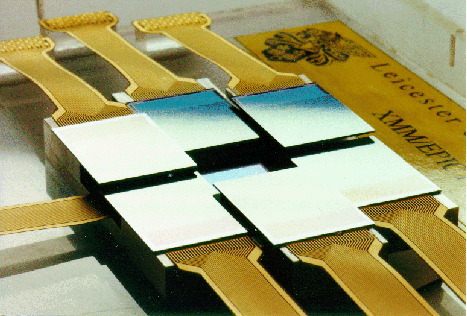
The whole EPIC-MOS array is shown on its mounting in the next picture.
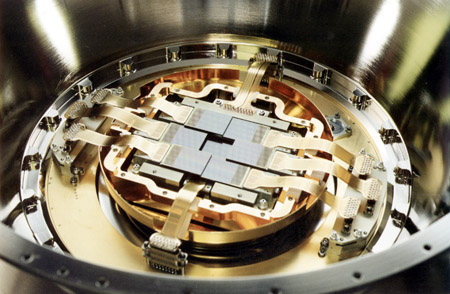
The MOS, as with all other XMM instruments, has been subject to rigorous pre-flight testing and calibration procedures. The next photo shows the MOS camera engineering model being subjected to such a procedure.
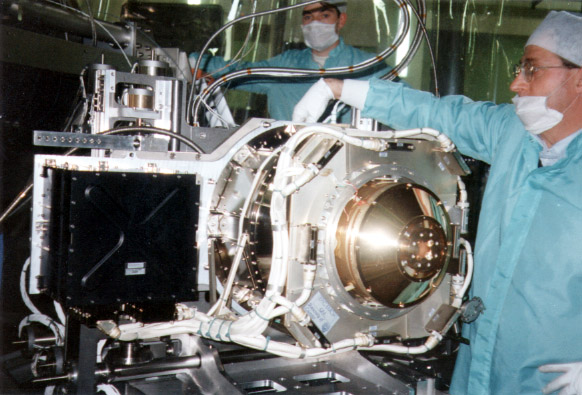
 EPIC-pn
EPIC-pn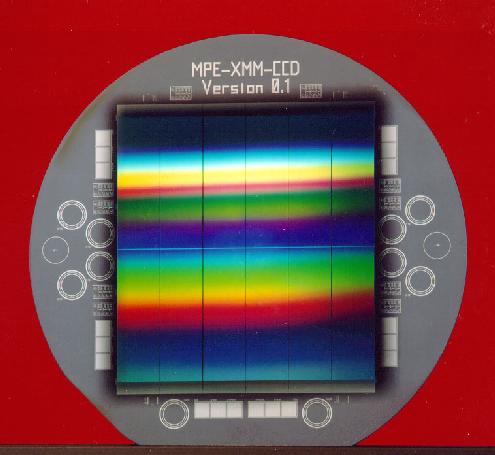
The chip array itself is embedded in a board carrying the camera electronics. This is shown here (the back of the pn chips are shown at the centre top position in the photo).
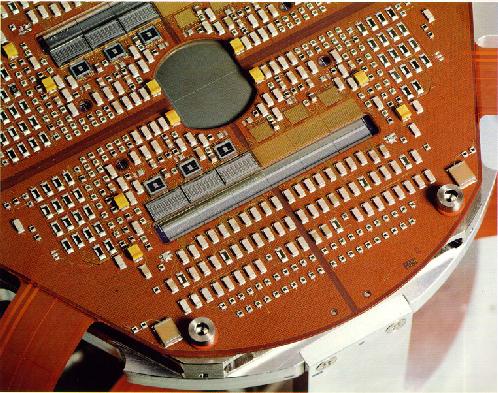
The EPIC pn camera was built by the Max-Planck-Institut für extraterrestrische Physik (Garching) and Astronomisches Institut Tübingen.
 XMM/EPIC interface
XMM/EPIC interface More information
More informationCheck out the University of Leicester Space Research Centre EPIC pages for more EPIC pictures and information.
Other institutes involved in the EPIC consortium also have dedicated web pages; for instance, the University of Birmingham; the Max-Planck-Institut für extraterrestrische Physik, Garching; IFCTR/CNR, Milan; and ITESRE/CNR Bologna.
A summary of the details of the performance of the instrument, along with proposal-specific information, is available in the EPIC section of the XMM User's Handbook (UHB).
The responsibilities of the EPIC consortium members are listed on the XMM Science Operations Centre EPIC page.
Find out more about the other XMM instruments: Back to the XMM schematic view.
These pages are adapted from various sources, mainly from the ESTEC page "Building XMM" and the University of Leicester Space Research Centre EPIC pages.
Various parties require acknowledgement for the photo material on this page. Particular thanks are due to the University of Leicester EPIC team, the Max-Planck-Institut für extraterrestrische Physik and the other members of the EPIC consortium.
Last updated: Thu Mar 4th 1999